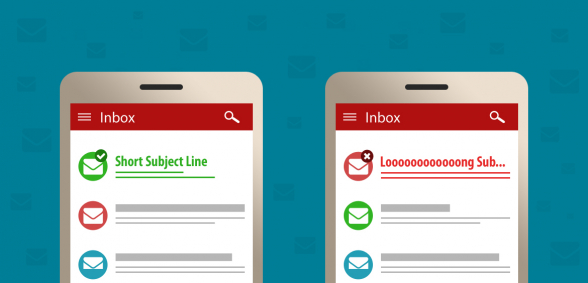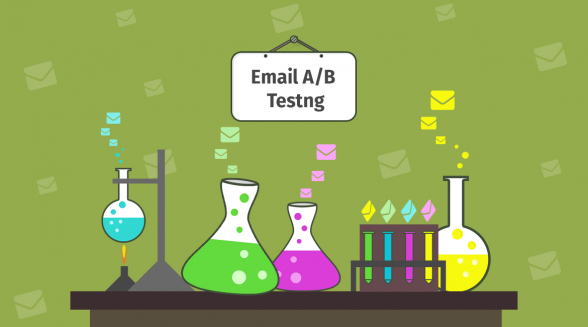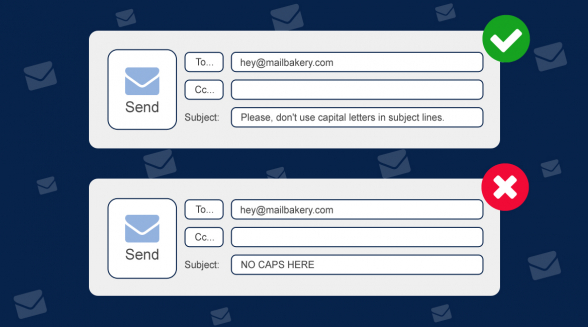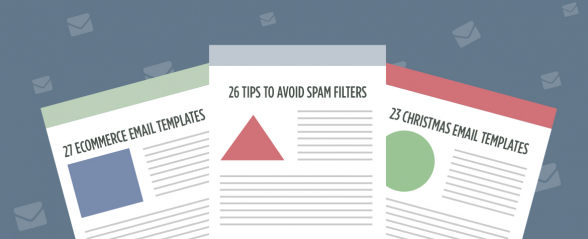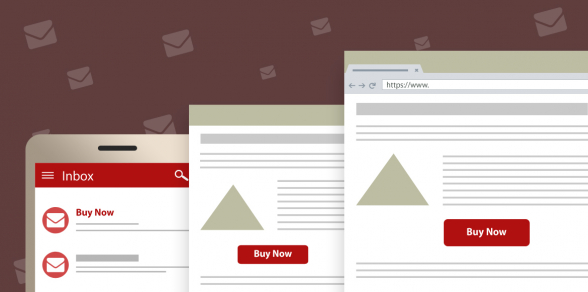23 Tips on Writing Email Subject Line Masterpiece
Reading Time: 5 minutesWe love to say “Don’t judge a book by its cover”, but what about emails? In email marketing a third of your subscribers will open your emails based only on your subject lines.
So, spend a little extra time on your subject lines, to make sure that they wont be the reason your email don’t get the clicks you want. An eye-catching subject line might be the difference between your email being deleted and a happy, loyal client.
Here is our helping hand on the subject (pun not intended) – 23 Tips on Writing Email Subject Line Masterpiece.
1. Shorten Your Subject Lines
Your readers should be able to quickly scan your subject lines and immediately understand what you wish to say. Don’t use words that are hard to decipher or filler words that bring no meaning to your subject line.
This rule is especially important because half of all emails are now opened on mobile and mobile email clients usually cut the subject line at the 25-30 character. At best try keeping your subject line in 6-8 words or up to 50 characters.
2. Personalize
Multiple researches confirm that personalization affects positively open rates. Obviously, the easiest thing to do is to include your recipient’s name in the subject line, everyone loves the sound of their own name.
However, you may also include the city where your client is from, the company they work for, the products they are interested in or use any other specific information that you have for your email subscribers to craft taylor-made subject lines.
3. Use A Different Subject Line Every Time
Don’t use one and the same subject line over and over again. Your readers have to be able to say what each of your emails is about by their subject lines. If you are using the same subject line every time, they wont be intrigued to open your emails anymore.
4. Be Honest
It is very important to be honest with your email subscribers. Don’t try to get your emails opened by making false promises in the subject line. Tell exactly what it is that they should expect in your email and let them decide if it is worth their time opening your email and reading it. Your subscribers trusted you by subscribing to your email, don’t make them regret their decision.
5. A/B Test Your Subject Lines
This is not just a tip, but an email marketing rule. Always test your email body copy and subject lines. As the saying goes “You can’t improve, what you don’t measure.”. So, measure the impact of your subject line A/B tests and find out what works best for your audience.
6. Tell What’s Inside
If your clients subscribe for a digital product that will be delivered by email, don’t just say “thank you for your purchase”, instead use a line like “here is the (product) you purchased from us”. Use your subject lines to make it clear what exactly is your email bringing to your clients. This will help the recipient prioritise your email without having to open it.
7. Use Clear Language
Avoid using flowery language. Be clear and specific. Let the reader know how your email is going to benefit him and state this in a clear and concise way.
It’s true that marketing and brand recognition is about standing out and using catchy phrases. However, working on your subject line is one time when you have to be more practical with your words. Your clients won’t appreciate it if you are wasting their time with funny subject lines that say nothing about what’s inside your email.
8. Use Action Oriented Verbs
Put action-oriented verbs in the beginning of your subject lines. Calls-to-action and subject lines have one thing in common, they both use language that aims at inspiring readers to take an action. Action verbs used in the beginning of the subject lines are usually much more enticing. You may really increase your email open rates by adding a strong verb to the subject line. Subject lines using actionable verbs install urgency and excitement, inspiring people to click on them.
9. Don’t Use CAPS
Using CAPS might be offending for the reader, that is the equivalent of yelling in spoken language. Your aim is to appeal to your clients and not to push them away with the tone of your message. Avoid the use of exclamation marks too.
10. Create a Sense of Urgency
There is no lack of distraction for your readers and they can easily skip your email. To make your email a priority for them you may put in a deadline in your subject line. Deadlines like “limited time offer” or “available today only” will prompt the reader to act immediately instead of postponing their action and potentially forgetting your email.
11. Use Numbers
One way to have your emails noticed is by including numbers in your subject lines. Using numbers creates a clear and straightforward message about your offer. This is an effective email marketing best practice, just like in blog titles.
12. Use Questions
To catch clients curiosity and focus their attention on your message, try asking a question in the subject line. This is a very good tactic because questions feel incomplete and inspire the reader to look for the answer, in your case opening your email.
13. Use Some Humour
Don’t shy away from using humour in your subject lines. Most people love a good joke. A funny subject line will make your message stand out in the clients’ inboxes and will delight them as well. Of course the degree to which you are using humorous subject lines depend on the tone of your brand, so select your jokes carefully.
14. Use List Subject Lines
List posts are very popular today and their titles are pretty catchy. They help us comprehend easily big and complicated data, breaking it down to smaller parts. Show your readers that your content is well organized and easy to digest by using a list subject line.
15. Use the Preview Text
Don’s skip the preview. The preview text that goes after the subject line is a great place to continue your message in. Many businesses forget this and leave the preview text be filled with text that doesn’t benefit their open rates at all.
16. Put Most Important Words First
Having in mind that 50% of emails are now opened first on mobile devices, you better stack the most important part of your message in the beginning of the subject line. Otherwise, some attention grabbing details may get cut off.
17. Remove Filler Words
With such a small space to convey your message to the reader, avoid using words that add no strength to it.
18. Let the Reader Know if You Need a Response
Help your clients prioritise their emails. Let them know if you need their immediate response right from the subject line. If you need one you may say “please reply” or “I need your thoughts on…”.
19. Avoid Spammy Words
If you are too pushy with your sales copy, there is a greater chance that your email is going to go in the spam folder. Avoid using sale-sy, openly promotional language and spammy words to reduce the risk of being punished.
20. Include a CTA
Try to include a call to action in your subject line. Being direct is not always a bad thing and in some cases using a call to action in your subject line may improve both your open and conversion rates. A/B test and see if it works for your audience.
21. Tease Your Readers
Just like with movie trailers, invite the reader to your email with a catchy preview. Think of something that will hook them up and ignite their interest.
22. Use “How to…”
This one is a little too popular, but this is because it works. “How to” titles offer something every reader is after, they promise to teach you something new. Their key to success is the use of human curiosity to attract the reader to the content of your email.
23. Stand Out in the Inbox
To get your subscribers to open your email you have to stand out in the inbox. When you think of the fact that the standard subject line is 6-7 words, in order to stand out in a client’s inbox you have to do something different. And this might be to either use a very long subject line or use a single word subject line. Remember, the point here is to stand out, not to convey an overly complicated or simplified message.

